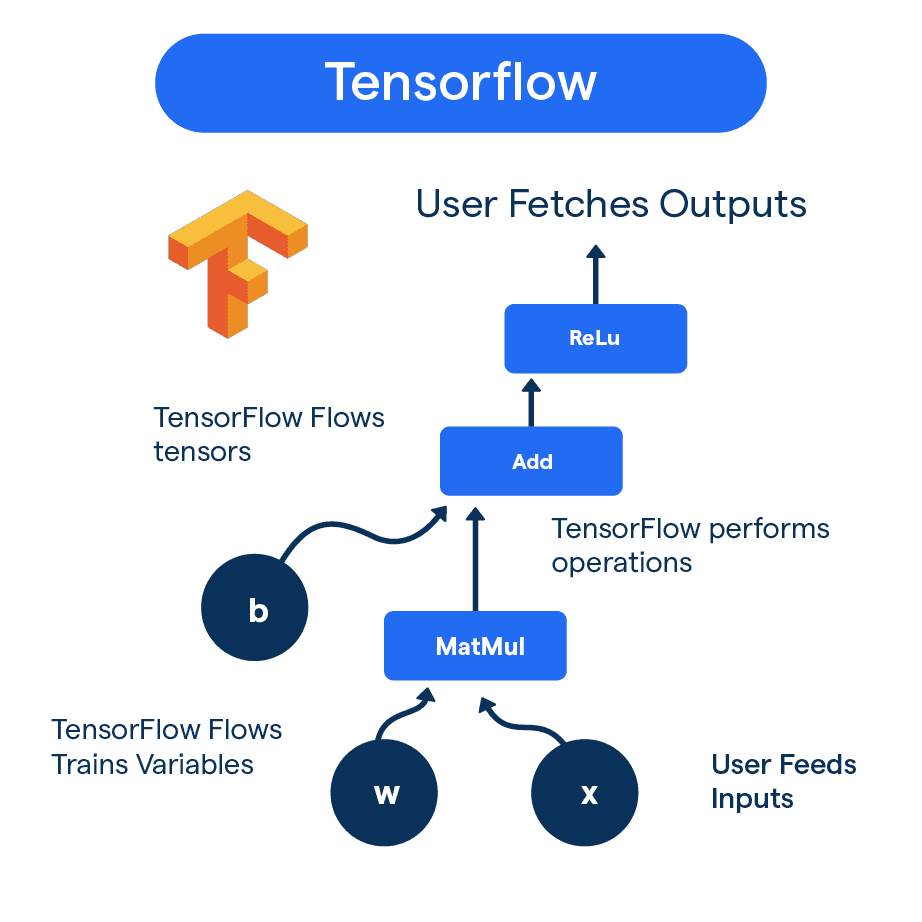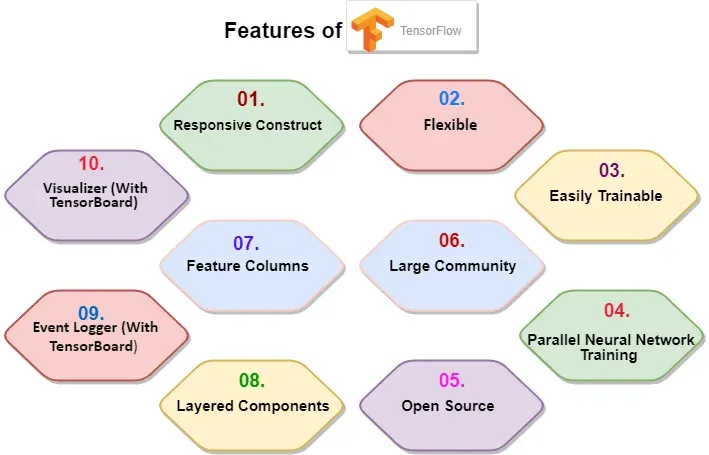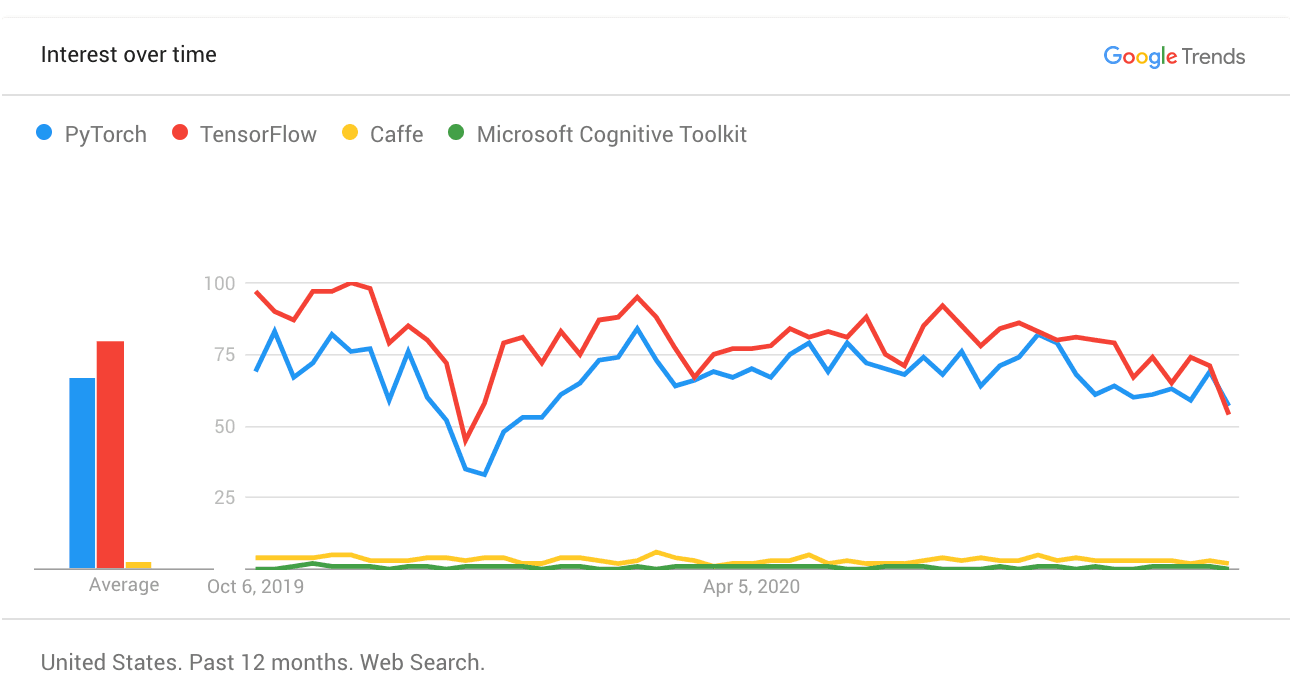Are you ready to dive into the exciting world of machine learning and artificial intelligence?
Well, buckle up because today we will unravel the key differences between two popular frameworks - TensorFlow and TensorFlow GPU.
These frameworks are like the superheroes of the machine learning world, helping us build powerful neural networks and analyze complex data. Over 22618 organizations use TensorFlow.
But what sets them apart? Which one should you use for your next project?
Don't worry; we've got your back!
In this article, we'll uncover the details of TensorFlow and TensorFlow GPU, giving you the inside scoop on their similarities and differences.
Let's get started, shall we?
What Exactly is TensorFlow?
TensorFlow is an open-source library for machine learning developed and maintained by Google. The platform allows you to easily build, train, and deploy various machine learning models.

With TensorFlow, you can implement machine learning algorithms and perform predictive analytics. Essentially, this framework is used for building neural networks that can identify patterns in data.
Understanding the Advantages and Limitations of TensorFlow
TensorFlow is a popular platform among machine learning enthusiasts due to its numerous advantages.
Advantages
- Supports a Wide Range of Devices: TensorFlow is versatile and supports various devices like Android, iOS, Raspberry Pi, and more without much fuss.
- Large Community Support: Being an open-source library, TensorFlow has a large community of developers and programmers who regularly contribute and provide solutions.
- Easy-to-Understand Syntax: TensorFlow has an understandable syntax and is easy to use even by beginners.
- Easier Debugging: TensorFlow offers better debugging than other machine learning tools.

Limitations
- Lack of Parallelism and Reduced Speed: TensorFlow has a limitation in parallelism, making it slower compared to TensorFlow Python GPU. This makes it unsuitable for complex deep-learning models.
- Heavy Computation Needs: TensorFlow can be computationally expensive, and it can be difficult to scale models to large datasets.
What About TensorFlow GPU?
When TensorFlow was first released, the library mainly ran on CPUs.
However, advances in machine learning have increased the demand for high-speed processing. As a result, TensorFlow GPU (Graphical Processing Units) was created to circumvent the speed restrictions of the standard TensorFlow framework.
Essentially, it is the GPU version of TensorFlow.
Understanding the Advantages and Limitations of TensorFlow GPU
Advantages
- High-Performance Computation: TensorFlow GPU utilizes the power of the graphics processing unit (GPU), which results in much faster processing than can be achieved using a CPU.
- Time-Efficient: The speed offered by TensorFlow GPU enables the processing and training of complex models much faster.
Limitations
- GPU Dependency: TensorFlow GPU requires your system to have a GPU, unlike TensorFlow, which only requires a CPU.
- Higher Cost: Acquiring a powerful GPU to run TensorFlow GPU can be costly, making it less accessible to hobbyists.
How GPUs Accelerate Machine Learning Compared to CPUs:
CPUs are designed for general-purpose tasks, handling various instructions sequentially. In contrast, GPUs excel at parallel processing, specifically suited for tasks involving large amounts of data like machine learning. Here's why:
- Massive Cores: GPUs have thousands of cores compared to a CPU's few cores. This lets them handle many calculations simultaneously, speeding up tasks like matrix multiplications common in deep learning algorithms.
- Optimized Memory Architecture: GPUs have dedicated high-bandwidth memory (VRAM) designed for fast data transfer, which is crucial for feeding data to the many cores efficiently.
- Specialized Hardware: GPUs include features like tensor cores specifically designed for accelerating linear algebra operations, essential building blocks of neural networks.
In summary, GPUs offer massive parallelism, faster memory access, and specialized hardware, making them significantly faster for computationally intensive machine-learning tasks than CPUs.
TensorFlow vs. TensorFlow GPU - What Should You Use?
The choice of framework to use depends on your specific needs and resources.
If you’re working on projects requiring simpler models with small to medium datasets that can be processed by a CPU on your system, you might prefer TensorFlow.
However, if you’re working with more complex models with larger data sets, you should consider using TensorFlow GPU to maximize performance.

Other Popular Deep Learning Frameworks
While TensorFlow and TensorFlow GPU dominate the scene, other frameworks like PyTorch are gaining traction. Here's a quick overview:
- PyTorch: Known for its dynamic computational graph, allowing for easier experimentation and debugging compared to TensorFlow's static graph. It's popular in research and rapid prototyping due to its Pythonic syntax and flexibility.
- Keras: A high-level API built on top of TensorFlow and other frameworks, offering a user-friendly interface for building and training neural networks. It's often used for rapid prototyping and beginners due to its simplicity.
- MXNet: Developed by Amazon, MXNet is known for its scalability and efficiency across various hardware platforms. It's often used for large-scale deployments and cloud environments.
Conclusion
Finally, TensorFlow and TensorFlow GPU are two variants of the same powerful deep learning framework, with important changes catering to distinct user requirements.
TensorFlow, the CPU version, is a flexible and extensively used framework for developing and deploying machine learning models.
It is appropriate for smaller-scale applications and development environments with simple computational needs.
On the other hand, TensorFlow GPU is designed to utilize the capabilities of Graphics Processing Units fully.
It is the recommended solution for large-scale, resource-intensive projects requiring efficient processing of big datasets.
While TensorFlow GPU provides impressive speed benefits, it requires a suitable GPU and may require more setup and maintenance.
On the other hand, TensorFlow offers a more straightforward setup and works on various hardware configurations. The choice between the two depends on the specific project requirements, budget, and hardware availability.
Overall, both versions empower users to dive into the world of deep learning and unlock the full potential of artificial intelligence.


